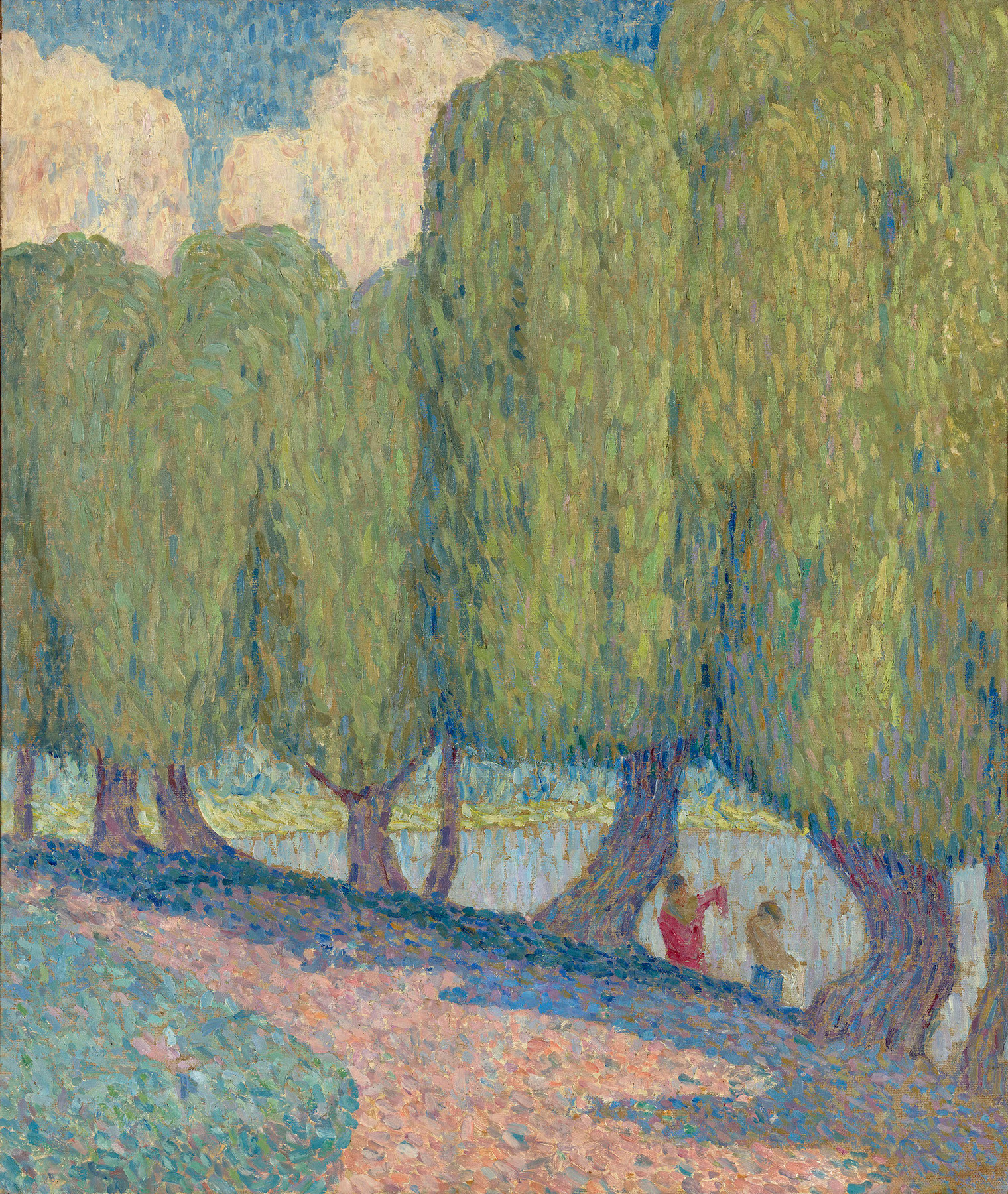Russian Art + NFT Auction
10 June 2021

* 46. BOGOMAZOV, ALEKSANDR (1880–1930)
By the Riverbank.
Oil on canvas, 61 by 51.5 cm.
120,000–180,000 GBP
Provenance: Private collection, USA.
Russian Art, Sotheby's New York, 15 April 2008, lot 59.
Acquired at the above sale by the present owner.
Private collection, Switzerland.
By the Riverbank is one of those rare early works by the outstanding artist and avant-garde theorist Aleksandr Bogomazov.
Thanks to Alexandra Exter, a fellow-student at the Kiev Art School, Bogomazov began to take a keen interest in current world trends in painting, turning first to the work of the Post-Impressionists and Symbolists, later to Italian Futurism. He then tried out various techniques, ranging from Impressionist to Abstract. In the end, he reinterpreted everything and evolved his own artistic language, to which he gave formal expression in his treatise Painting and Elements.
The landscape presented here dates from this formative period, one of an impassioned and radical creative artistic quest by Bogomazov and his Kiev workshop companions. It bears the stamp of Symbolist influence and the painting techniques characteristic of Post-Impressionism, where the driving force of the composition is a dot that lengthens into short, disciplined yet vigorous brushstrokes. Thanks to this technique, the subjects merge into a shared dynamic space where all the elements are equally important – the trees, the cloudy sky and the bend in the road with the bluish shadows cast on it, as well as the human figures – the only spot of vivid colour in the picture.
In his treatise Bogomazov sets out the rationale for identifying the dot as the primary element of painting on the pictorial surface, writing that "movement leads the development from the dot to the line, the shifting of which produces area as a result." This, according to Bogomazov, gives rise to the phenomenon of a form that exists only from the "moment when the primary element moves" (A. Bogomazov, Painting and Elements. From the Treatise quoted in Nashe Nasledie. Istoriko-kulturny zhurnal, 1991, No. 2 (20), p. 144).
Bogomazov’s field studies were no less important to him at the time. After being expelled from art school in 1905 for taking part in street protests, Bogomazov studied alongside Alexander Archipenko (1887–1964) under Sergei Svetoslavsky (1857–1931), a painter strongly influenced by the Barbizon School, who urged them both to adopt his Impressionistic plein air methods: "Go to the parks and look at the same place every day and every hour – then you will see how nature changes." It was when these formal searches came up against Bogomazov’s emerging interest in colour, rhythm and mobility of forms that his own recognisable style of the pre-avant-garde period came into its own. In 1908 Bogomazov took part in Kiev’s famous The Link exhibition, a landmark in the drive to establish a new kind of art. David Burliuk (1982–1967), the exhibition’s principal ideologist and organiser, marked its opening by publishing his manifesto An Impressionist’s Voice in Defence of Painting, in the magazine In the World of Art and the newspaper The Kievan. Burliuk explained that Russian Impressionism as practised by artist such as Bogomazov – originated in French Impressionism, but had been transformed by their pantheistic and primitivist mindset.
The green-blue-pink colour range of By the Riverbank is typical of this stage. It reflects the connection between Bogomazov’s painting and the muted palette of the Symbolists, and also between his work and the impressions gained from the frescoes in the Cathedral of St Sophia in Kiev – and, of course, from his circle’s shared search for a way to express sound and colour sensations visually. It is no coincidence that, during these years, David Burliuk was writing his ‘impressionistic’ poems Lazy Blue and Green and Blue, and Exter’s contemporaries could see a ‘green coldness’ in her canvases (D. Burliuk, Fragmenty iz vospominaniy futurista, quoted in G.F. Kovalenko, Alexandra Exter, Galart, Moscow 1993, p. 181).
Bogomazov’s surviving compositions from this period are extremely rare and mainly to be found in museum collections. The appearance at auction of an early work of such quality is an extraordinary opportunity for collectors to acquire an exquisite example of Bogomazov’s early ouerve.
Notes on symbols:
* Indicates 5% Import Duty Charge applies.
Ω Indicates 20% Import Duty Charge applies.
§ Indicates Artist's Resale Right applies.
† Indicates Standard VAT scheme applies, and the rate of 20% VAT will be charged on both hammer price and premium.